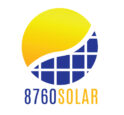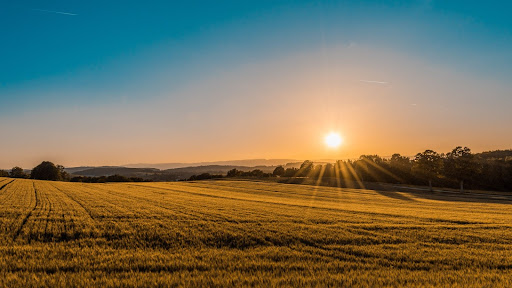
Agricultural businesses are perfectly set up for solar installations. They usually have lots of land or roof space that’s ideal for harvesting the sun’s powerful rays.
But the sheer number of installation options can be overwhelming. From roof installations to ground installations, plus a whole lot of subcategories to consider – how do you figure out what’s best for your land?
That’s where we come in!
We’ll break down all the installation types so you can better understand what they are and how they work. This will help you determine which one will work best for your business. And if you’re still not sure, don’t worry; you can get in touch with us at 8760 Solar, and we’ll be more than happy to assist you further.
But for now, let’s dig into the details.
In a Nutshell
Want the quick version of this article? Here we go:
Solar installations fall into three broad categories; roof, ground, and floating:
- Roof installations are efficient and excellent for existing farm buildings and structures. They also have the added advantage of not taking up any extra space.
- Ground installations offer the possibility of a much larger solar system, which means more energy harvesting for you. And with the exciting emergence of agrivoltaics, you can now combine solar and crop farming in the same space.
- Floating installations are perfect for bodies of water located on your property. They can cover a large area but don’t take up any valuable farming land.
- Other exciting and interesting solutions exist, such as irrigation-mounted installations and solar greenhouses.
And at a glance, here is what each type of installation is ideal for:
| Type of Installation | Best Suited for |
| Rail-mounted, Rail-less-mounted, or Shared-rail roof panels | Buildings with pitched or sloping roofs, including: – Farmhouses – Barns – Stables – Brood houses – Machinery workshops, shelters, or sheds – Storage sheds – Grain warehouses – Greenhouses and other covered crop farming – Quonset huts |
| Solar shingles | Buildings with pitched or sloping roofs, where aesethics are important including: – Farmhouses – Stables – Hotels & resorts |
| Flat roof-mounted panels | Flat roof concrete agricultural or commercial buildings – Machinery workshops, shelters, or sheds – Storage sheds – Grain warehouses – Strip malls – Retail centers |
| Regular ground-mounted | Large clear areas of agricultural land: – Farmland – Unused acreage – Dead zone in pivot corners |
| Pole-mounted ground panels | Smaller or irregular areas of agricultural land – Agrivoltaics – Animal grazing, farming, and husbandry – Agrivoltaics with machinery use |
| Vertical montage-mounted ground panels | Large clear areas of agricultural land – Agrivoltaics – Animal grazing, farming, and husbandry – Agrivoltaics with machinery use |
| Floating panels | Bodies of water: – Lakes – Reservoirs – Oceans |
| Ditch-mounted panels | Irrigation ditches, channels, and canals |
| Carport panels | Vehicle and farm machinery ports and shelters |
Roof-Mounted Solar Installations
Roofs are an obvious choice for solar installations since they tick most of the boxes for suitability. They tend to be wide, flat areas with little to no obstructions that would hinder sunlight from reaching the panels.
Suitable agricultural buildings include:
- Farmhouses
- Barns
- Stables
- Brood houses
- Machinery workshops, shelters or sheds
- Storage sheds
- Grain warehouses
Additionally, mounting solar panels on the roof ensures they don’t take up additional space that you may need for other purposes and provide a more secure location than if they were situated on the ground.
There are some considerations, though. The roof must be structurally sound and strong enough to withstand the weight of the panels and their mounting system. And having panels mounted must not compromise the integrity of the roof, such as its weather and fire resistance.
There are several different types of roof mounting for solar panels, each suited to a specific type of roof, so let’s see what they are.
Sloped or Pitched Roof Solar Panel Mounting
For sloped roofs, there are a number of different possibilities available:
Rail-Mounted Solar Panels
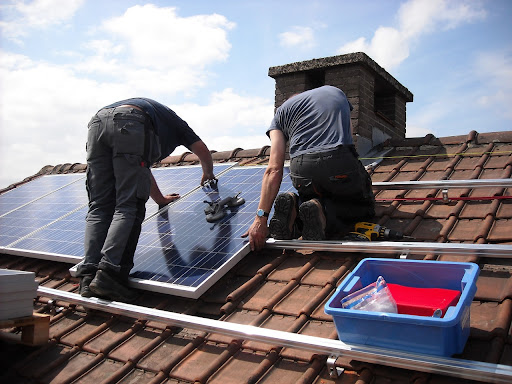
As the name suggests, this type of installation involves mounting the solar panels to rails that are fixed along the roof. The rails are first secured to the roof using bolts and screws, after which the panels are attached with clamps.
This setup requires a rail running along the top and bottom of the panels, which tend to be fixed in a vertical or portrait position.
There are also a few subtypes of this system:
- Fixed tilt rail mount: This is where the panels are secured in a tilted position and cannot be moved after.
- Adjustable tilt rail mount: A bit more flexible than fixed tilt. This setup can be manually adjusted when needed.
- Multi-axis rail system: This involves a mechanized system that automatically moves and tilts the panels to face the sun throughout the day.
Pros:
- Most common type of mounting that’s easily available
- Panels can be tilted either manually or mechanically for optimum sun exposure
- Compatible with almost all types of solar panels
- Electrical wiring is easily reachable for repairs and maintenance
- Easier to clean the underside of the panels and the roof
Cons:
- Looks less attractive compared with other installation types
- Harder to mount around obstacles
- Weighs a lot (a 50kW system can weigh almost a ton)
- Due to the weight, not all roofs are suitable for this setup
Rail-Less-Mounted Solar Panels
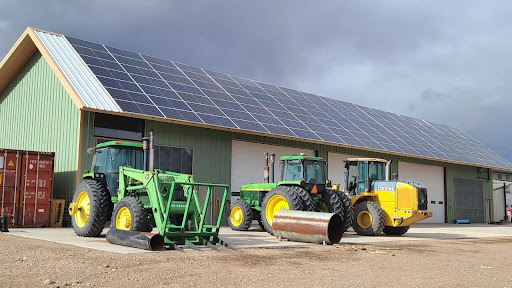
This setup involves fastening the solar panels directly onto the roof’s seams or ribs by using a bracket, bolts, and screws. Here, the roof’s structural components become the rail and provide support for the panels.
While a rail isn’t used, the panels still require the same number of fastening points as a railed system to ensure they are attached securely and don’t present a hazard.
Pros:
- Provides a more aesthetically pleasing result
- Faster and easier to install than railed systems
- Weighs less than railed systems (around 85% lower dead load)
- Manufacturing and shipping costs are lower due to the reduced material requirements
- Easier to install around obstacles
- Less O&M due to the fixed, non-moving parts
Cons:
- Once installed, tilting the panels for maximum exposure is not possible
- Rail-less is a newer technology, so fewer companies currently offer it
- Wiring must run through the roof, making them hard to install
- Due to the low profile, the panels are more susceptible to snow and ice damage
Shared Rail Mounting
Shared rail mounting is very similar to rail-mounted systems. The difference is that you have one less rail per row of solar panels since each row shares a rail. Essentially, the bottom end of one row of panels shares a rail with the top end of the panels below it.
This system shares the same pros and cons as rail-mounted systems with one extra advantage – the entire setup weighs less and uses fewer materials. Therefore, it can be suitable for less sturdy roofs and looks neater too
Solar Shingles
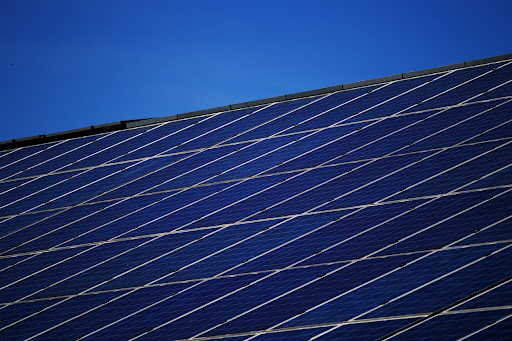
Solar shingles are a comparatively new technology that’s been gaining popularity for residential installations. As the technology advances and becomes cheaper to manufacture, we’ll likely see it spread to commercial and agricultural properties also.
Solar shingles have a dual purpose. They are both a solar panel and a roof tile in one. Therefore, they are installed in place of an actual roof. The shingles are laid and fixed like standard roof tiles and have the ability to conform to the roof’s shape and contour.
Pros:
- Highly versatile and good for complicated roof shapes
- They look very aesthetically pleasing
- Easier to clean and maintain
- Increases the value of the property
- Lightweight and suitable for most roof types
Cons:
- Currently more expensive than panels
- About 20% less efficient than panels
- Cannot be tilted or adjusted once installed
- Requires a longer installation period
Flat Roof Solar Panel Mounting
Many commercial and agricultural buildings have wide flat roofs, making them great candidates for solar installation. Rather than penetrating the roof to secure the panels, they are more commonly held in place using ballasts. Because it’s not necessary to drill into the roof, this type of setup is usually quickly installed.
Ballasts usually consist of a foot or tray that cradles the panel mount in a tilted position. The foot will also have heavy blocks at its base to hold it in position.
Flat roof panels are fixed in a southwards-facing position if possible. When panels can only be secured in an East-West position, a dual-tilt system is generally used. This setup places the rows of panels right up against each other and tilts the rows 90° in alternating positions so you get a zig-zag effect.
Pros:
- Fast and easy to install
- Easily accessible for cleaning, maintenance, and repairs
- Usually not visible from ground level
- Because of the ease of installation, flat roof installations can often be cheaper
Cons:
- Flat roof panels are not as tilted as on a sloped roof and don’t gain as much sun exposure
- Because of the lessened tilt, the panels get dirtier faster, and the rain is not as effective at washing them off
- High-speed winds can easily damage flat roof arrays
Ground-Mounted Solar Installations
Ground-mounted solar arrays are generally unsuitable for small residential areas due to the amount of space they take up unless you have a rather large lot size. However, most agricultural businesses tend to have a lot of land at their disposal, making this type of setup a viable option.
Unlike a roof, ground-based solar installations don’t need to worry about a building’s structural integrity and are not bound by the confines of what they’re mounted on. This allows them to become much larger in size and, in turn, generate a lot more electricity for your business.
Additionally, ground-mounted solar panels offer significant advantages that do not come with the roof-mounted variety:
- Larger installations have the capability to produce enough electricity to cover the entire farm or business’s energy bills.
- Utilities also buy back any oversupply of power, which then becomes an additional source of profit.
- Vegetation and animals can thrive underneath the panels, protecting and encouraging vital ecosystems.
- Ground panels provide shade cover to the ground beneath and protect it from the harsh sun. This protection opens up new possibilities for combining farming and solar installations on the same piece of land.
- Because of the shade created, this has a significant effect in reducing water evaporation; according to one study in China, this was as much as a 33% reduction. When the ground retains more water, this also reduces soil erosion and lessens the need to manually water crops.
There are some drawbacks, though. For example, the larger the ground-mounted installations, the larger the cost.
And as the US moves towards its 2032 Paris targets, it is anticipated that (as a conservative estimate) 22,000 square miles worth of solar panels will be required to power the whole of the USA. While farms do have a lot of land at their disposal, much of it is already devoted to necessary food or material production. Often, sacrificing a portion of this land in favor of solar panels may not be financially viable.
But don’t let these potential drawbacks put you off. Much of the initial installation cost can be gained back in tax credits and incentives. And where sacrificing land is concerned, solutions such as agrivoltaics (see below) do exist and present exciting opportunities for farmers all over Colorado.
Let’s take a look at the different options you have for ground-level installations.
Regular Ground-Mounted Solar Panels

Ground-mounted solar installations consist of rows of rails that are anchored to the ground, either with foundations or by using ballasts. The type of foundation used differs depending on the ground material and how soft it is, but using steel beams is the most common method.
The panels themselves are fixed in either a portrait or landscape position and held at the top and bottom by the rails, and it’s usual for several rows of panels to be stacked in one row.
To maximize efficiency, modern ground installations have tracking systems installed. These automatically move the panels throughout the day so they continue to face direct sunlight. According to a study carried out in 2017, tracking systems can increase output by around 33%, and according to Energy Sage, dual-axis trackers increase this further by around 5% – 10%.
There are two types of tracking systems that you will find on ground arrays:
- Single axis: This system moves an entire row in one go and spans from east to west as the day moves on.
- Dual-axis: This is where a row of panels will be split into smaller groups of panels. The tracking system then moves each group independently from the others, making it a more versatile system.
You can also have a centralized motor that powers and moves all rows of panels in an installation at once, or you can opt for distributed motors per row or group of panels.
Pros:
- Ground installations can be huge and generate a lot of power
- They can move and tilt for maximum efficiency
- The panels are easily accessed for cleaning and maintenance
- Foliage and ground cover can continue to grow beneath the installation
Cons:
- Takes up a significant amount of room
- More expensive to install than smaller rooftop solar panels
- Installation time is longer and more challenging
- Tracker systems add to the cost and require more maintenance, and also increase the likelihood of experiencing technical issues
Pole-Mounted Solar Panels

This is a variation of ground-mounted solar panels. Rather than fixing panels to a rail in a rigid row, small groups of around six to eight panels are mounted on a single pole.
This is a more versatile option as the poles can be placed in an irregular fashion. Therefore, if you have obstacles on your land, you can arrange the poles around them.
Additionally, the poles can be elevated higher, lifting the panels further off the ground. This can increase the panels’ efficiency but the biggest advantage is that this setup allows animals to pass by and graze underneath. This makes pole-mounted panels an interesting option for farms that operate in animal husbandry, meat production, and other animal products.
Like standard ground installations, the pole variation can be fitted with a tracking system to ensure the panels always reach the sun.
Pros:
- More versatile positioning and suitable for land with obstacles
- Animals can graze underneath thanks to the higher position
- Takes up less space than standard ground mounts
Cons:
- More expensive than standard ground mounts
- Requires more maintenance as you need a separate tracking system for each pole
Agrivoltaic Solar Installations
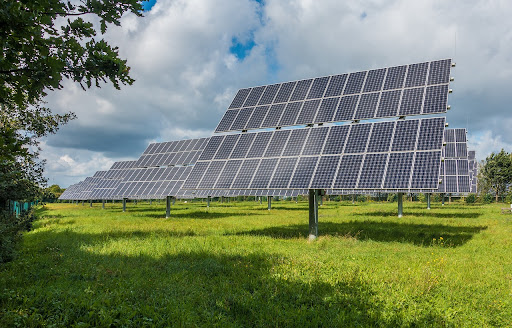
Agrivoltaics has been around for a few decades but is only just starting to enjoy popularity in the USA. This is where you dedicate the land for a dual purpose – solar installations and agriculture.
To achieve this, the solar panels are arranged in such a way that it makes it possible for crops to grow underneath. This usually means that rows of panels are installed higher off the ground and spaced further apart to allow for the penetration of light to get to the crops.
Currently, there are three key types of agrivoltaics systems being used on farms today:
- Lined agrivoltaic arrays: Similar to standard ground-mounted installations but with space underneath for crop production.
- Stilted agrivoltaic arrays: This setup features panels on high-stilted rails. The added height allows more light to reach the ground and for farm machinery to pass by underneath.
- Greenhouse Solar Arrays: In place of glass or polyurethane, special solar panels are installed that also allow an amount of light to pass through and reach the crops within.
The lined and stilted arrangements usually have the tracking systems built in, while the greenhouse solar panels are fixed to the structure in a similar way to roof panels or solar roof shingles.
Pros:
- Maximizes land use and efficiency
- Encourages a microclimate for better crop production and yields
- Less water evaporation reduces watering requirements and costs for crops
- Better water retention in the soil reduces soil erosion
- The microclimate increases biodiversity
- Economically attractive – revenue is earned from harvesting power and crops simultaneously
- Because the ground is partially shaded, this makes agrivoltaic more suitable for some crops that don’t like the hard midday sun
Cons:
- Because the ground is partially shaded, this makes agrivoltaics unsuitable for some types of crops
- Initial setup costs are higher due to more materials used in the build
Montage Vertical Installations
Convention tells us that in order for solar panels to be effective, they must continuously face the sun, or face the sun for a significant portion of the day. However, emerging evidence from Clean Technica has found that this might not be the case, especially in areas like Colorado that see a significant amount of sunlight each year.
Vertical installations mount the panels upright and in line with the panels facing in an east-west direction, a bit like a fence or barrier. This design makes them particularly suitable for agrivoltaics because they can be arranged in rows, allowing farm machinery to easily pass by without the need to raise the panels high off the ground.
Pros:
- Offer the same benefits as traditionally ground-mounted panels
- Provide more space for crops, animals, and farm machinery
- Take up less space overall
- Can be placed along borders
Cons:
- May not be as effective as traditional mounts
- The panels must face east-west restricting positioning
- This is currently quite a new style of set up and is more expensive to install
Floating Solar Installations (Floatovoltaics)
Floatovoltaics is the act of linking solar panels together in a mat-like format and laying them on open water. The panels are held together with special racking made from plastic. The racking is flexible and placed at least three feet above the water to allow for the motion of water, and each individual float is tilted to allow the panel to face the sun properly.
This is certainly the least used type of solar installation, but it’s growing in popularity, notably in Asia and Europe. Where the US is concerned, it has only just begun to make an appearance.
Floating installations can easily be increased or reduced and are suitable for most bodies of freshwater.
Pros:
- Versatile and can be custom-sized as needed
- Doesn’t encroach on agricultural land
- High performance as there is usually an unobstructed view of the sky
- The water cools the panels, increasing the efficiency
- The shade created by the panels helps reduce algae formations and water evaporation
Cons:
- Floatovoltaics is a new technology and is expensive
- It’s not suitable for saline water (yet!*)
- Can obstruct and damage wildlife and marine habitats
- High wind speeds can create problems
*Solar developers are working hard to change this, and ocean-based arrays that can withstand small waves up to 13 feet could be available within the next year. Arrays that can withstand waves up to 32 feet are expected to be available after 2026.
Other Unique and Interesting Agricultural Solar Installations
We like to think that wherever there’s a surface, there could be a solar panel. And we’re excited by the constant innovation and solutions that arrive in the solar market.
Many of these options are great for farming and agricultural businesses, too, increasing the number of solar panels you can have installed and reducing the running costs of your farm.
Ditch-Mounted Installations
Floataics require a large body of water to be installed, which a lot of farms may not possess. However, it’s commonplace for agricultural land to have a network of irrigation channels and canals used to keep the farmland watered.
These narrow channels and canals of water certainly aren’t large enough to lay a solar panel upon, but it’s perfectly possible to mount a solar panel above them. The mount straddles the water secured on both banks using steel trusses, or it’s fixed using suspension cables and the solar panel is mounted above the water.
This setup is advantageous because it doesn’t reduce the amount of available farming land. The banks of these channels are typically unused, offering a clear space for the mounts to be installed.
Secondly, the shade created protects the water’s surface and reduces evaporation. By doing this, you end up with more water in your irrigation system. In fact, according to Anthropocene Magazine, irrigation-mounted solar panels can save 39,000 cubic meters of water per kilometer of irrigation canals each and every year.
Pros:
- Utilizes unused space on farmland
- Keeps aquatic weeds and algae production to a minimum
- Increases water supply by reducing evaporation
- Reduces the need for diesel engine pumps
Cons:
- Installation costs are higher than ground-mounted panels
- Some irrigation banks may be unsuitable to hold solar panel mounts
- Potentially harder to access for maintenance
Carport Installations
Most farms require a sheltered area to protect expensive farm machinery but often lack suitable shaded areas to accommodate it.
Installing pole-mounted solar panels so they double up as a carport is another great example of how solar panels can provide a dual purpose.
In this case, the poles are mounted far enough apart so that machinery and vehicles can fit easily and park between them. Then, the panels are mounted high enough to provide adequate vertical space and create a continuous canopy that protects vehicles and machinery from the weather.
Pros:
- Provides an additional area for harvesting energy
- Provides protection and a safe area to store machinery and vehicles
- Easy to access and maintain
- The canopy is aesthetically pleasing
- Relatively inexpensive to install
Cons:
- Surface space can be small compared to other types of installation
- Wiring must run through the roof, so more challenging to install
- Panels can be more susceptible to snow and ice damage due to the shallow slope of carport roofs
Greenhouse Installations
We’ve touched on this briefly as a method of agrivoltaics, but we felt it deserved a special mention on its own. Greenhouses are vital for the production of many crops, flowers, and other produce, but they are expensive to maintain and run. For example, keeping the air circulating and the humidity and temperature right takes a lot of power.
However, there are now solar panels that have been specially designed to let in the light while harvesting it for energy. The semi-transparent panels can be fine-tuned to absorb light at different wavelengths. These wavelengths are perfect for energy harvesting and aren’t required for photosynthesis. The remaining light passes through the panels, and this is what the plants require to flourish.
By constructing greenhouses out of these panels, the produce can grow healthily and in the right conditions while generating electricity and reducing running costs.
Pros:
- The structure of the panels can harvest energy and let plants thrive
- They are versatile and can be created in a variety of shapes
- Reduce greenhouse farming running costs
- Help to regulate internal greenhouse temperatures
- Don’t take up valuable land space
Cons:
- Technology is not yet widely available
- The panels are expensive to buy and install
- This type of installation can require more maintenance and fine-tuning
Quonset Hut Solar Installations
Quonset huts are a familiar sight on farms. Their corrugated prefabricated steel structure and curved, semi-cylindrical shape make them a practical, lightweight solution for storing goods, machinery, and other farming necessities.
However, due to their unique shape, fixing solar panels onto them is trickier as the panels must conform to the curved shape of the roof. Additionally, the increasing pitch of the roof makes it harder to place the panels in a position where they will receive enough sunlight if they do not have a south-facing side.
Like with a roof rails set up, quonset huts are installed in a similar manner. As the solar panels are made from silicon they adapt quite well to the curved roof and can be a great additional solar space for any farm to consider.
Hopefully, as solar becomes commonplace for agricultural businesses, we’ll see more solutions emerge for this type of structure.
Which Solar Installation Should You Choose?
Picking the right installation for you and your business needs can certainly be a challenge. The outcome depends on many factors, such as available land and space, how much electricity you want to generate, and the type of agricultural activity you carry out.
However, such tough decisions don’t have to be made alone. 8760 Solar is a solar installation company built by farmers for farmers. If anyone understands the unique requirements of agriculture and how solar can play a vital role in its success, it’s us.
We will work closely with you to make the most of the land you have so you can maximize its potential. And with all the available tax credits and incentives, it may not be as expensive as you think.
Get in touch with 8760 Solar and ask as many questions as you need.
Call or email our team today
(719) 470-0254
We’re more than happy to advise you and help you take the first steps toward a sustainable solar future.
Frequently Asked Questions
What Are the Different Types of Solar System Setups?
There are three key types of solar systems. You have roof-mounted systems that can be attached to or form part of the roof, ground-mounted systems, and installations that float on water.
Which Type of Solar Panel Is Best for Agriculture?
There is no “one-size-fits-all” solar solution for agricultural businesses. The best setup depends on the type of space and how much is available. Solar installation experts such as 8760 Solar will be able to advise you on the best setup for your business.
What Are the Three Types of Solar Panels?
While there are many variants of solar panel types, there are three main overall types: polycrystalline, monocrystalline, and thin-film.
What Is the Difference Between Cheap and Expensive Solar Panels?
Cheap solar panels don’t have the durability, quality, and reliability of more expensive panels. Essentially, you get what you pay for, so if you want a solar system that works and lasts, aim for the best possible quality.
Do Solar Panels Work at Night?
While solar panels work in indirect sunlight and during cloudy days, they don’t work at night. If the moon is particularly bright or there are a lot of bright artificial lights close by, the panels may harvest a small amount of energy, but it will be negligible.
